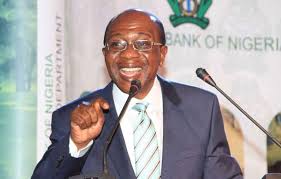Is the Monetary Policy Rate an Anchorless Anchor in Nigeria?

In March 2023, the CBN’s Monetary Policy Committee raised the monetary policy rate by 50 basis points (bps) to 18% per annum (pa). This represents the sixth consecutive rate hike with a cumulative increase of 650bps. The major considerations underlying the decision of the MPC include: the global financial tremor, a rise in inflation, unintended consequences of the cash crunch, currency pressures, depleting external reserves, and sustained positive GDP growth.
However, despite the recent monetary tightening actions of the CBN, inflation remains elevated in Nigeria, currently at 22.04%. This raises the question of how responsive Nigerian inflation is to monetary tightening. Is there any relationship between monetary policy rates, short-term interest rates and inflation in Nigeria? Is Monetary policy an effective tool for curbing inflation in Nigeria?
Typically, monetary policy is the primary tool for curbing inflation. It is used by central banks to regulate specific macroeconomic variables and manage economic fluctuations with the ultimate aim of achieving price stability, exchange rate stability, full employment and sustainable economic growth. Other tools include wage and price control, supply-side policies, and exchange rate policies.
In response to the COVID-19 pandemic in 2020, central banks around the world adopted quantitative easing and reduced interest rates to record low to maintain the flow of credit and limit the negative economic impact of the pandemic. The unintended consequence of this was a spike in inflation, which was compounded by the Russia-Ukraine war-induced supply– chain disruptions.

In response to rapidly growing inflation, central banks have tightened monetary policy by increasing interest rates.⁸ However, inflation remains far above most central bank targets. For Nigeria in particular, the CBN’s inflation target is 6-9% while inflation is currently at a 17-year high of 22.04%. Nigeria’s monetary policy framework is explicit inflation targeting.
Does Nigeria’s inflation respond to monetary tightening?
There has been a disconnect between the policy and effective rates in the market in Nigeria thus leading to distortions in the market and outcomes. Traditionally, monetary tightening or hikes in MPR increases borrowing costs, reduce lending, raise the interest income of banks, and increase non-performing loans as firms struggle with high borrowing costs.
It also encourages savings as savings rates increase. An uptick in savings leads to a reduction in consumption in the short run because of the marginal propensity to save, thereby stifling consumption patterns. However, in the long run, the increase in savings will lead to accelerated investments and eventually spur output growth.
Ideally, raising the MPR should also decrease inflation, but this is not the case as seen in Figure B.1. Figure B.1 reveals a positive relationship between the inflation rate and the MPR in Nigeria. Between January 2022 and February 2023, inflation maintained an upward trend despite interest rate hikes. This implies that Nigeria’s inflation remains irresponsive to monetary tightening. On the other hand, the US economy shows the effectiveness of monetary policy on inflation. Figure B.2 reveals a negative correlation between the inflation rate and the federal fund rate. As the fund rate increases, inflation decelerates.

Is there any relationship between monetary policy rate, short-term interest rates and inflation in Nigeria?
The effectiveness of monetary policy tools is largely dependent on the connectivity between the anchor rate and other nominal rates. The anchor rate in Nigeria is disconnected from the short-term interest rates and t-bill rates thus making monetary policy ineffective. Despite the monetary tightening measures of the CBN through six consecutive hikes in the MPR, money supply rose to 18.3% year-over-year in February 2023 from 17.2% in January 2023. Credit to businesses and consumers also increased to 16% year-over-year. Inflation increased to 21.91% year-over-year in February 2023 from 21.82% in January 2023.



Figure B.3 reveals that as the MPR increases, inflation also increases, while the one-year treasury bills rate declines over a range. Comparatively, Figure B.4 shows the responsiveness of short-term interest rates to the anchor rate in the U.S. There is an apparent disconnect between the anchor rate and the other rates in Nigeria. In Figure B.5, the Anchor rate in Nigeria is disconnected from the short-term interest rates and t-bill rates. Intervention loans amongst other factors are undermining the effectiveness of the tightening cycle, reducing the impact of monetary policy.
Why is monetary policy ineffective in curbing inflation in Nigeria?
The lack of independence and full autonomy of the Central Bank undermines the effectiveness of monetary policy in Nigeria. In addition, CBN’s periodic multi-sector intervention money buoys liquidity. It is also pertinent to note that monetary policy is delinked from its core fundamentals as there is an apparent disconnect between the anchor rate and other nominal rates in Nigeria. Indeed, the MPR is now an anchorless anchor; short[1]term interest rates are not anchored to the MPR.
Specifically, market imperfections and excessive monetary growth continue to impede monetary policy effectiveness. Money supply growth and excess liquidity persist because of growth in the monetary base as a result of rising Ways and Means advances (N23trillion) by the CBN to the Federal Government. CBN’s direct money multi-sector interventions and intervention loans by other institutions (including the Bank of Industry and the Bank of Agriculture) are undermining the effectiveness of the tightening cycle.
Furthermore, there’s an absence of effective coordination between monetary and fiscal authorities. These and more have rendered monetary policy measures deployed by the CBN ineffective. Besides, Inflation stoking factors in Nigeria are mostly supply-side issues: energy crises leading to high energy costs; foreign exchange scarcity; and supply shocks. Therefore, fiscal measures must complement monetary measures for the latter’s effectiveness in curbing inflationary pressures.
Conclusion
The apparent disconnect between the Anchor rate and other nominal rates in Nigeria brings to the fore the urgent need for interest rate restructuring. Nominal interest rates must move in tandem with the monetary policy rate in order to improve monetary policy effectiveness. The CBN must continue to intervene in the market to mop up excess liquidity by intentionally raising effective interest rates and issuing OMO bills. Further increases in the MPR can send the appropriate tightening signal. An increase in effective interest rates will also raise the marginal propensity to save and reduce consumption in the short run while increasing investments and engendering output growth in the long run.
Going forward, there is a need to intentionally prioritize the independence and autonomy of the CBN; this is the key to effective monetary policy. An institution responsible for the nation’s monetary policy should be effectively empowered and enabled to withstand political pressures and undue interferences from the executive, industry and opposition groups. Significantly reducing the impact of the CBN’s financing of fiscal deficit on money supply and gradually phasing out CBN credit intervention programs are equally key measures for effective monetary policy. Furthermore, there is a dire need to decouple and limit the responsibilities of the CBN to monetary policy formulation and implementation while entrusting another body with the responsibilities of bank supervision and currency matters as in other climes. Most importantly, refocusing on price stability as the primary and core mandate of the CBN remains imperative.ADAPTED FROM THE PROSHARE




